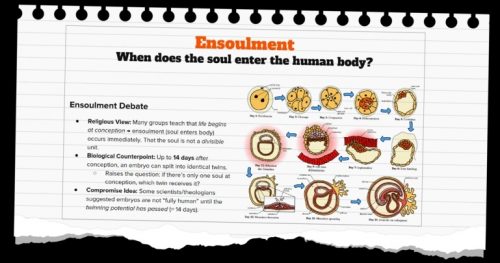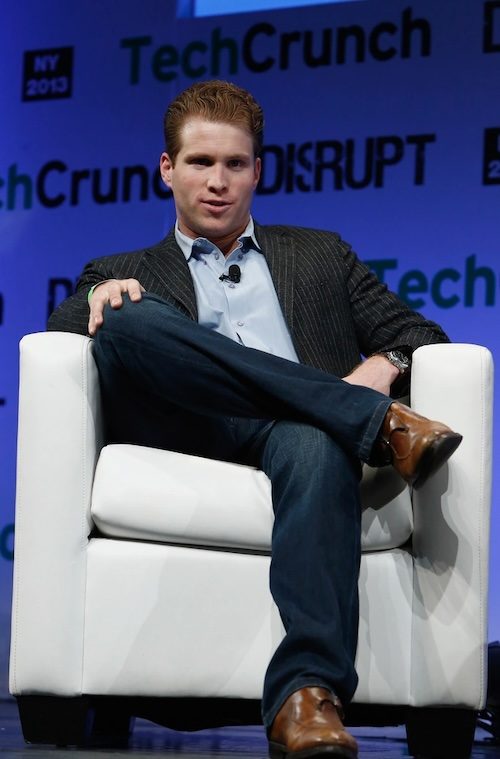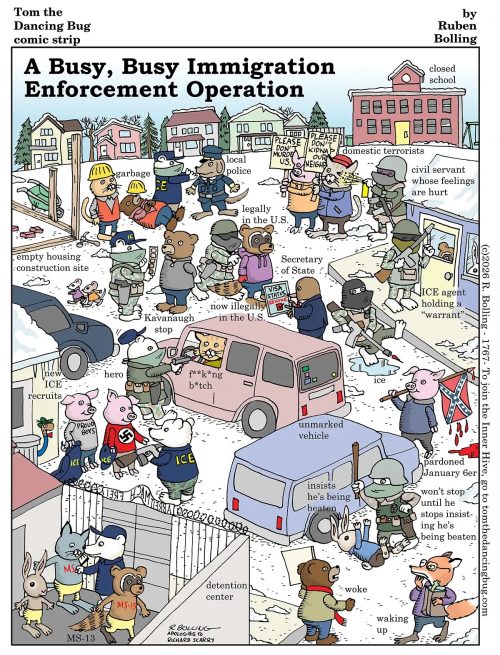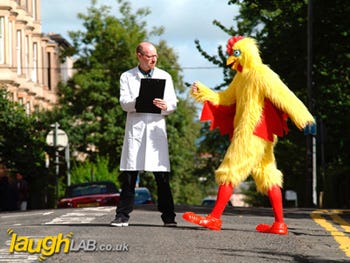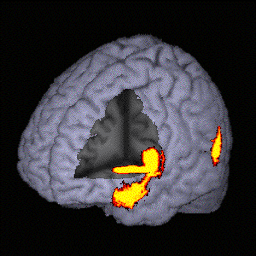sources
- bad science
- diary of a teenage atheist
- new humanist blog
- pharyngula
- richard dawkins foundation
- sam harris
- skepchick
- richard wiseman
Powered by Perlanet
It’s time for some obscure magic and music hall history.
I’m a fan of a remarkable Scottish conjurer called Harry Marvello. He was performing during the early 1900s and built a theatre in Edinburgh that is now an amusement arcade. I have a previous post on Marvello here and have just written a long article about him for a magic history magazine called Gibecière (the issue is out soon).
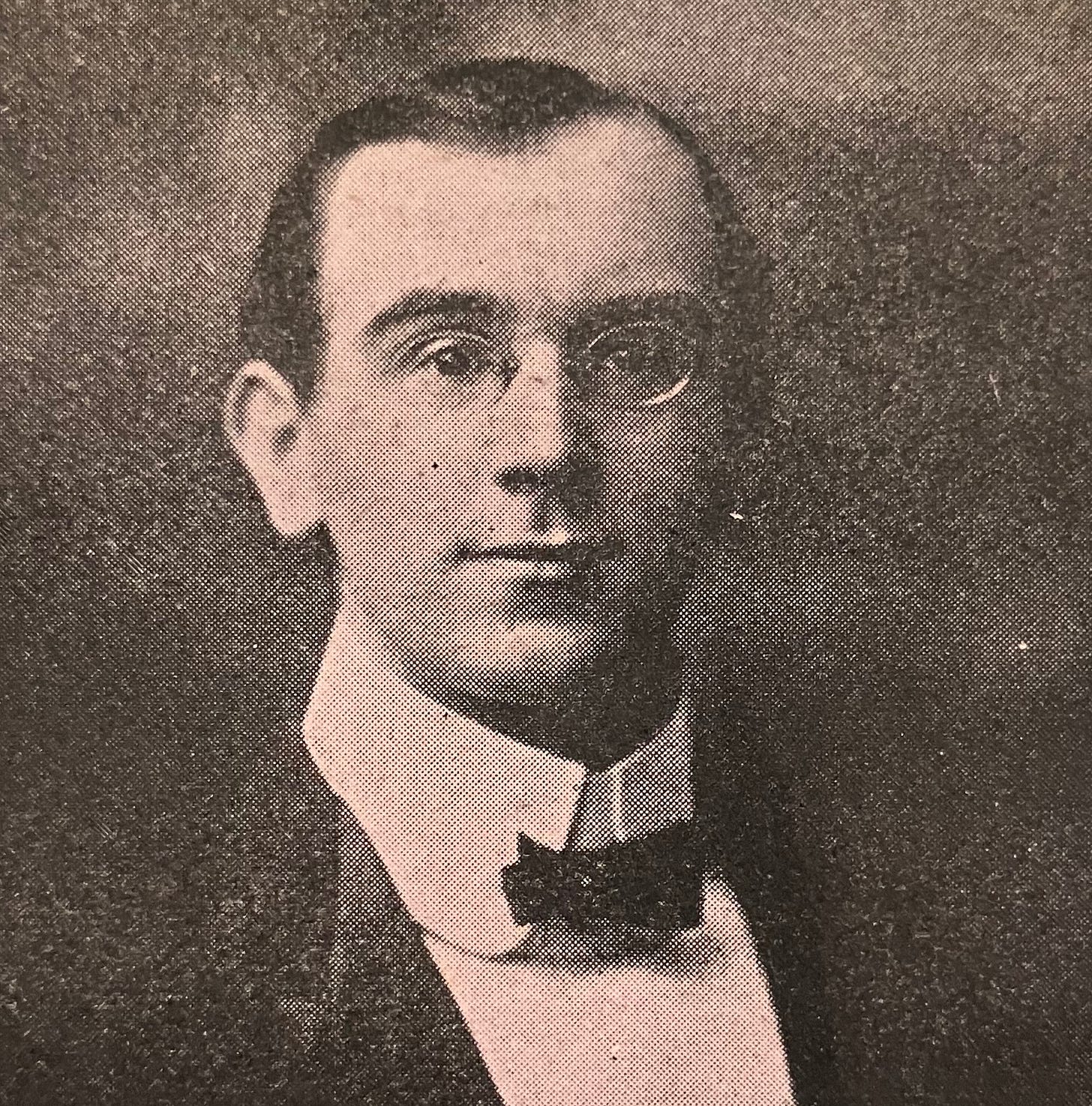
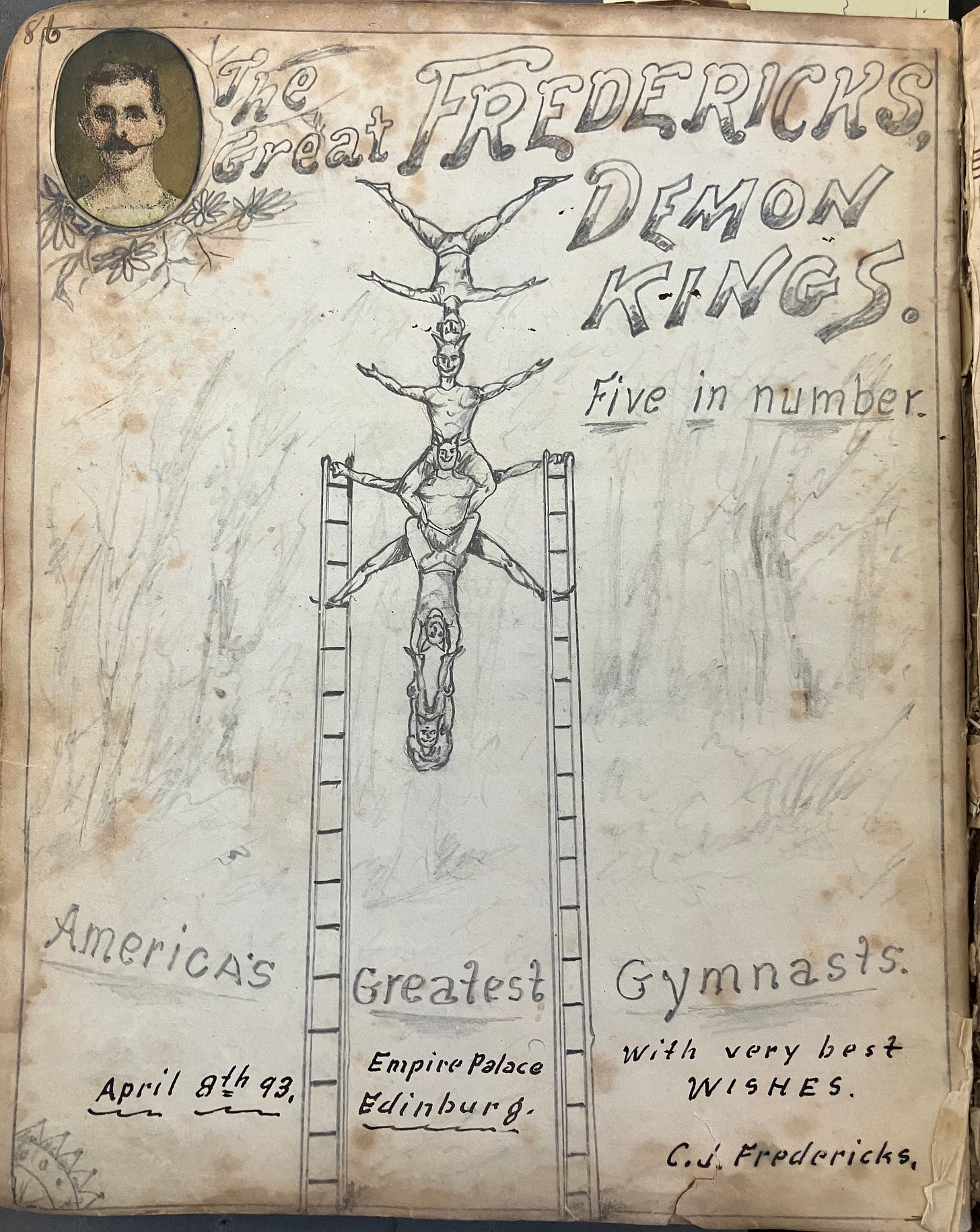
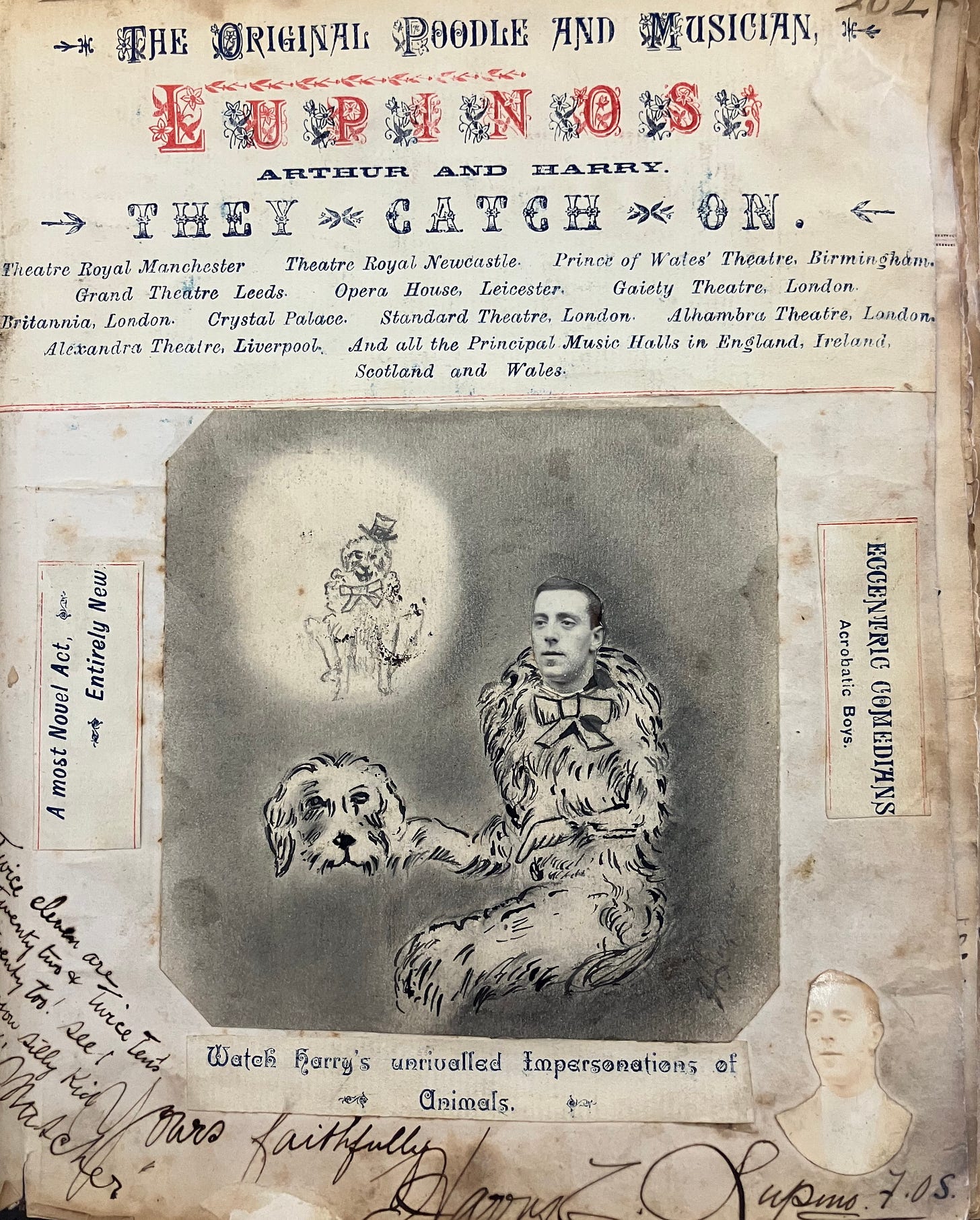
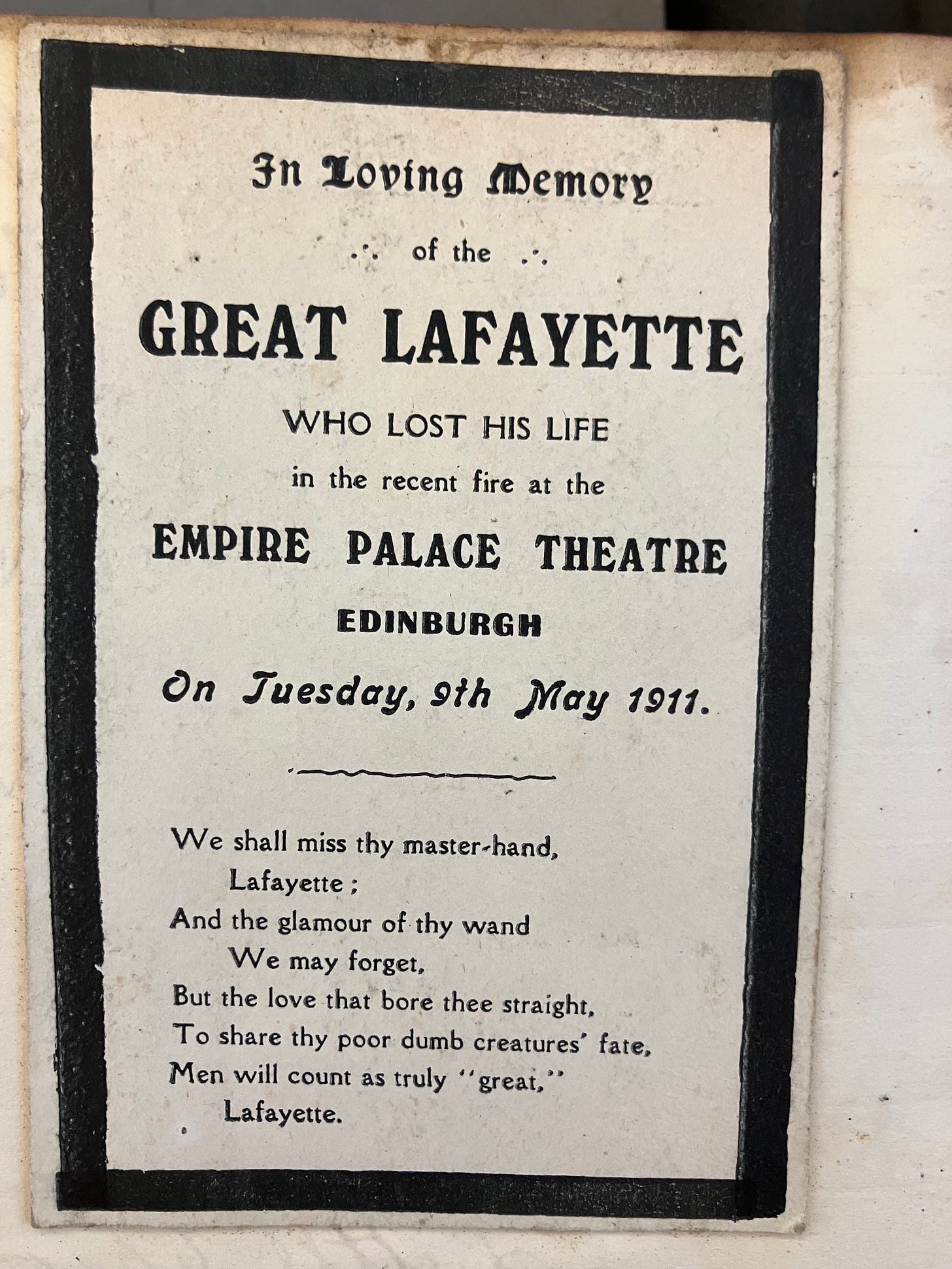
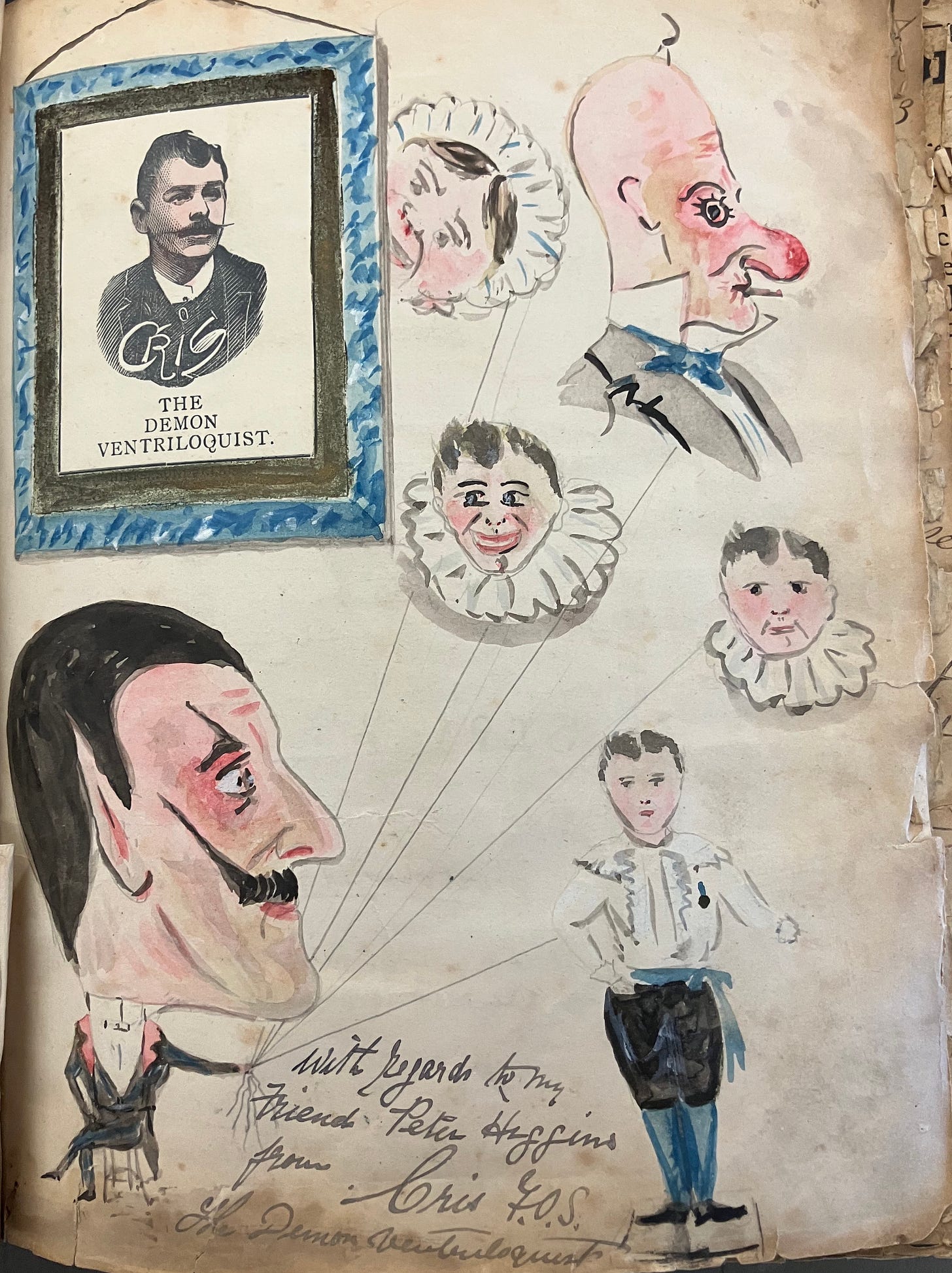
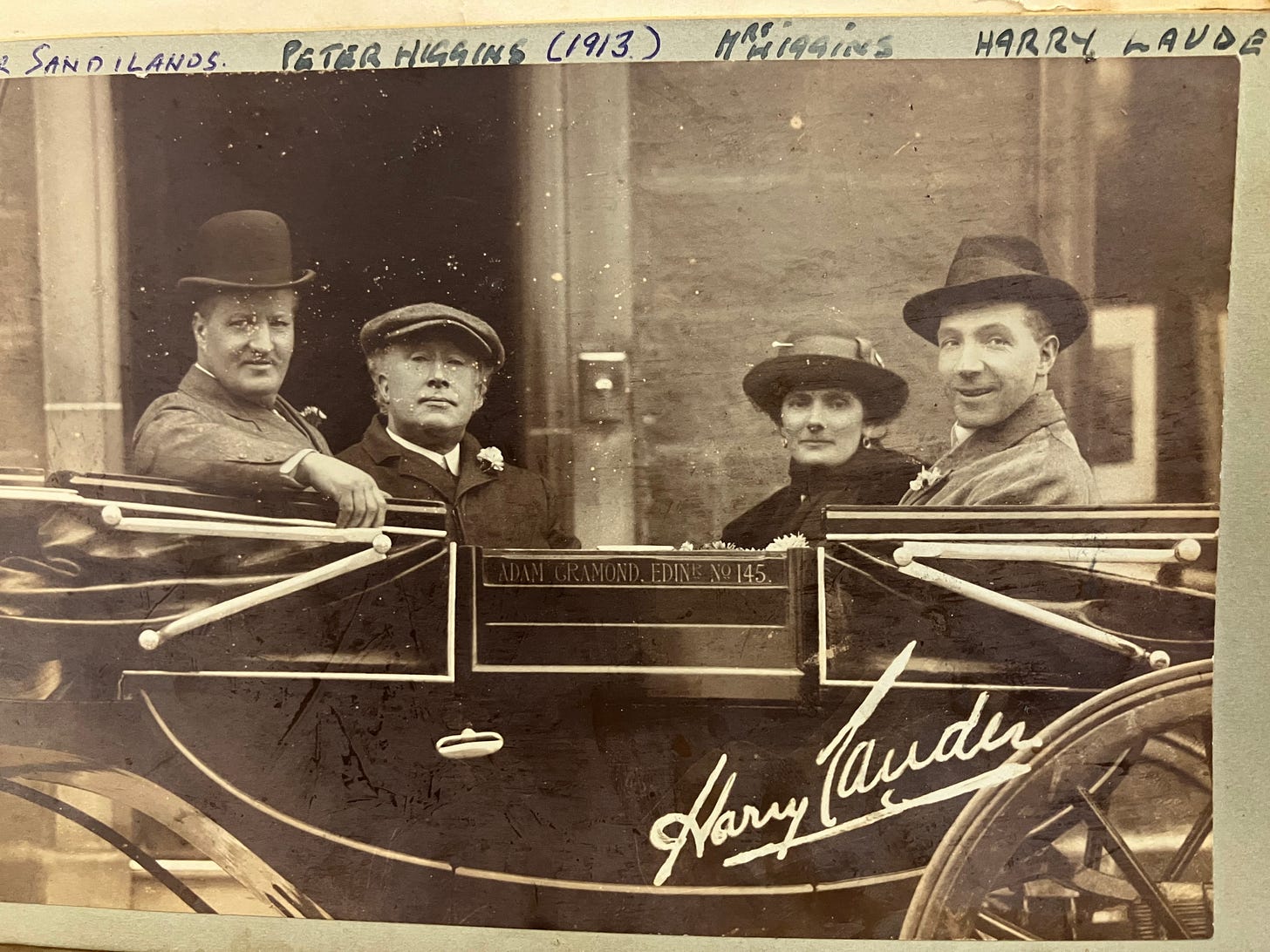
I do not trust this article about the chaos at the university of Austin, UATX. The author’s premises are unsound.
The inaugural year of the University of Austin, or UATX as it’s known, had been marked by the frenzy and occasional chaos that one might expect from a start-up aimed at disrupting American higher education. The audacious experiment — the construction of a new university ostensibly based on principles of free expression and academic freedom — had drawn the interest and participation of a star-studded cast of public intellectuals, academics and tycoons.
It was not ostensibly based on principles of free expression and academic freedom
. That is a lie. It was populated with a class of disaffected professors who were mad that their right wing views, misogyny, and racism were not getting the love they wanted from existing universities. Free speech
was their excuse, but what speech was not allowed? That universities did not like demeaning black students, digging up the graves of Native Americans, harassing women on campus, White Nationalism, hating diversity, or kicking Palestinian students off campus? Those were the issues that motivated the early fans of UATX.
It was built by a couple of billionaires to justify their views, and it was rabidly endorsed by Bari Weiss, who also promoted the Intellectual Dark Web
, and is now in the process of destroying the credibility of CBS News. It’s not at all about free speech, and is entirely about propping up a dying authoritarian ideology. Jesus, they’ve even got a bust of Bari Weiss proudly displayed in their library. I can’t take them seriously.
As for their star-studded cast
, the author of this article tries to list them, and has to admit that the faculty “lean” right…more like they’re all lying on the floor, clutching their appendix.
The list leaned right, to be sure. Loury, who is Black, zealously opposes affirmative action. Mamet had called Trump “the best president since Abraham Lincoln.” Hock served as chairwoman of an organization called Texas GOP 2020 Victory. Several of the academics had experienced backlash for taking conservative positions. These included Dorian Abbot, a geophysicist who’d had a planned lecture at MIT on extraterrestrial life canceled over his views on DEI; Peter Boghossian, who’d resigned from Portland State University in part because of the institution’s response to his sending hoax articles to academic journals; and University of Sussex professor Kathleen Stock, who’d faced protests over her allegedly transphobic views, which she disputed.
To single out just one of these rogues, Kathleen Stock. She has said that trans women are still males with male genitalia, many are sexually attracted to females, and they should not be in places where females undress or sleep in a completely unrestricted way
; she’s a trustee of the LGB Alliance; she has declared that there are only two immutable sexes, man and woman, erasing the existence of people who don’t fall into her binary categorization. Yet she claims she is not transphobic. The author is intentionally ignoring the evidence that UATX was a right wing project all along. His article is full of material that I would use to argue that it was not a credible source from the very beginning.
For instance, here’s an image used in one of their courses (not a science course; I don’t think they have any of those).
OK, we’re done. It’s not possible to defend the intent of the founders of UATX; it’s a house of cards built on a foundation of garbage.
It is true that it seems to be disintegrating, though. There have been prominent defections, included by some actually prominent professors, so it’s collapsing into a dungheap of aggrieved losers. There has lately been a huge conflict at the university.
The night before, the campus had hosted a dinner and conversation between the prominent conservative historian Niall Ferguson and Larry Summers, the former Harvard University president and Treasury secretary. Later, that evening, the billionaire entrepreneur Peter Thiel would deliver the first of a series of lectures on the Antichrist. People at UATX had grown accustomed to fast-paced action.
But in the afternoon, all of the professors and staff were summoned, quite unusually and mysteriously, to a closed-door meeting. It had been called by Joe Lonsdale, a billionaire entrepreneur who’d co-founded the data analytics company Palantir Technologies with Thiel. Together with Ferguson and the journalist Bari Weiss, Lonsdale had been a driving force behind the creation of UATX and was a member of the board of trustees. But he wasn’t often present on campus, and it was almost unheard of for a member of the board to summon the staff, as Lonsdale had.
The campus was quiet that Wednesday, the first of the spring term. The college, which operates under a quarter system, doesn’t schedule classes on Wednesdays, and so no students would be around to see the staff coming and going from the conference room in the elegant, former department store where UATX had made its home. Through the window, one could see the huge American flag in the atrium, illuminated by a skylight in the ceiling. It was a warm, pleasant day in Austin, but Lonsdale’s mood didn’t match the weather.
“Let’s get right into it,” he said. Then, with heightened affect, Lonsdale explained his vision for UATX — a jingoistic vision with shades of America First rhetoric that contrasted rather sharply with the image UATX had cultivated as a bastion of free speech and open inquiry.
“It was like a speech version of the ‘America love it or leave it’ bumper sticker,” one former staffer told me, and if you didn’t share the vision, the message was “there’s the door, you don’t belong here.” Like many of the people I spoke with for this story, the staffer was granted anonymity for fear of reprisal. “It was the most uncomfortable 35-to-40ish minutes I’ve ever experienced. People were shifting uncomfortably in their seats.”
One attendee described the contents of Lonsdale’s speech as essentially a right-wing version of the Statement of Faith you’ll find at places like Answers in Genesis. You have to subscribe to four principles to work at UATX:
“That all staff and faculty of UATX must subscribe to the four principles of anti-communism, anti-socialism, identity politics, and anti-Islamism (this is the first time I heard of these four principles);
“That ‘communists’ have taken over many other universities and that he, Joe Lonsdale, would stay on the board for fifty years to make sure that no ‘communists’ took over UATX (the identity politics crowd and some Islamists are a threat, but the Marxist-Leninist menace in 2025?)”
Oooh, I guess the identity politics crowd
are a threat similar to the Red Scare of the 1950s. To work at UATX you now have to swear on the ghost of Joe McCarthy now, I assume.
Remember, this university that the author claimed was built on a virtuous foundation of Free Speech was actually established with the big money of a billionaire and the propaganda of a Zionist apologist for the Trump administration. That billionaire was…Joe Lonsdale. The mask is off. Many of us could see right through it on the day this lie of an educational institution was announced.
Never trust a billionaire. They all lie.
Sometimes it’s really hard to be living in Minnesota. I’m a Pacific Northwest boy born and bred, I like temperate climates, gentle rains, and an ocean nearby. We woke up this morning to 0°F, 30mph winds, and more and more snow; my wife had to go to work, and I was up at 5 to help her armor up and strap on layers and layers so she can survive the walk to her job (I’m staying home and doing housework and prepping for the next week of classes — I get to stay in the warm).
Sometimes I think we have to be crazy to live here.
But then we see our fellow citizens rise up and do the right thing, and I instead feel like we’re incredibly lucky to live here.
Today, an obnoxious right wing provocateur had scheduled an anti-protest march in Minneapolis. It’s not clear what his goal was, other than to tromp around and declare that he hates Muslims. It was supposed to be a big rally led by this clown, Jake Lang, whose claim to fame is that he was a convicted January 6 rioter who was pardoned by Trump, and has in the past led similar hate rallies in Dearborn, Michigan, as well as Texas and Florida.
His Minnesota rally did not go well for him.
His side was represented by maybe a half-dozen people (also defended by a swarm of city police and a big black war machine with a sonic cannon), while the streets were packed with thousands of people chanting “fuck Nazis” at them.
A group of right-wing anti-Islam protesters arrived at Minneapolis City Hall Saturday morning, facing off against a much larger crowd of counter-protesters.
Jake Lang, a conservative social media influencer, organized the rally downtown. He arrived with several other right-wing protesters, carrying anti-Islam signs and chanting.
The counterprotest was mostly nonconfrontational, but several counter-protesters immediately surged in to meet the far-right group when they arrived.
Some participants yelled back at the far-right protesters, chasing them as they walked around the block in front of City Hall.
The confrontation was brief, with Lang and most of his supporters leaving the scene quickly. Most of the counter-protesters were also dispersing.
That’s right. They ran away. Lang was overwhelmed by Minnesota citizens. He whined a bit while escaping.
You’re being replaced! Do you not understand you’re being replaced!Lang screamed into the microphone, later yelling,We deserve a future for white Americansandsend the Somalis back.
For his trouble, he was punched, like a good Nazi, and walked away bleeding.
He was punched in Michigan, too, although they didn’t draw blood. Lang might want to quit before the escalation continues.
He’s a pathetic loser with a lost cause.
I guess it’s not so bad to be a Minnesotan.
As someone who spent many hours reading Richard Scarry books to the kids, this resonates.
I appreciate the local atmosphere, with all the snow and ice on the ground. It’s snowing right now, as a matter of fact.
You might be amused by this letter to the editor in the Kansas City Star. Martin Dressman, retired social worker, is very upset. He’s horrified that ICE is killing people, but something else has made him so mad that he had to express his opinion at length.
I attended a protest at Mill Creek Park on the Country Club Plaza on Jan. 10. It was organized by a coalition of groups as a part of a nationwide day of action in response to the shooting death of Renee Good in an altercation with an Immigration and Customs Enforcement agent in Minneapolis the previous week.
I wanted to be supportive. I do not like what I am observing and hearing in the United States right now. I’ve done my study of history. I know what I’m seeing. It’s vile. It’s dehumanizing.
As I approached the gathering, one of the first signs that was readable to me from a distance declared, “F*** ICE.” As I began to mingle into what was observed to be a growing crowd of participants, I viewed a couple of other signs with the same message. That said, much of the signage that I encountered struck me as reasonable, meaningful, focused.
I approached one of the people with a “F*** ICE” sign, And I shared my sense that their presence at the rally was what was most helpful, but the sign was not. I was not well received.
Shortly thereafter, I heard an announcement of the official start of the rally. A speaker introduced themselves and informed the crowd that there were representatives at tables set up around the park that would be available to field questions and concerns, and to provide information. The speaker then introduced the person they said would be responsible for safe execution of the rally, stating that they wanted this to be a nonviolent gathering. The first words out of that person’s mouth, through a bullhorn, were “F*** ICE!” The crowd responded loudly, “F*** ICE!“ This exchange was repeated three or four times with increasing fervor.
I proceeded to one of the tables the rally leader had mentioned, and I expressed that I thought our physical presence was the clearest message. I was supportive of the event and its focus, but I did not believe that the profane “F**** ICE” messaging was favorable to our efforts. The person leaned forward to me over the table and yelled, “She was shot in the face three times!” I responded that I was aware of that. The person that I engaged, and another at the table, waved me off stating that they were wanting to listen to the speaker.
At that point, I departed the rally. I would not support such messaging.
You will not be surprised to learn that he ends his complaint with a Bible quote.
Pay attention, Mr Tone Policeman.
Is he lucky because he gets to meet real live aliens, or because he’s being taken away from this wretched mess of a planet? I see it both ways.

The Genius Myth (Jonathan Cape) by Helen Lewis
In the 1980s, when high-IQ societies like Mensa were surveyed about the term they thought best applied to their members, they didn’t gravitate to the term “geniuses”. More than any other, they liked the word “outsiders”.
This is one of many revealing facts from Helen Lewis’s new book on the concept of “geniuses”, whose subtitle warns us of “the dangerous allure of rebels, monsters and rule-breakers”. For a genius to linger in the public consciousness, says Lewis, it is best if they are perceived as abnormal and therefore special in some way. Disgraced psychologist Hans Eysenck, who specialised in the area, said geniuses have to be mad, psychopathic or at least a bit odd to live up to the stereotype.
The word “genius” conjures up a whole host of connotations, from Einstein through Hawking to Picasso. (Historically, most recognised geniuses are men, although Lewis devotes a chapter to the overlooked women who supported some of them to do their best work.) You could make an argument for the term being more of a hindrance than a help; that we would be better off disposing of it entirely. Lewis doesn’t go that far. “We need the idea of genius – the demigod, the superhero, the shaman,” she writes. “We need stories to make sense of the world.”
What is the story of genius, then? The way Lewis frames it, it is close to the study of fame. Some people are brilliant and may deserve to be recognised as geniuses. But the term, in popular culture at least, isn’t limited to an objective definition, nor can it possibly conform to the rigid measurements of an IQ test. A genius isn’t a technical benchmark; it is a constellation of factors, which together scratch the itch of their particular age. “Societies anoint exceptional people as geniuses to demonstrate what they value,” Lewis writes.
Through various case studies (The Beatles, Tolstoy, Edison, Musk), Lewis applies her microscope to the patchwork of factors that created the tapestry of genius. She tells us that one of the reasons that California became the technology centre of the universe was that the eastern states in the US had employment contracts that let bosses sue their employees for defecting to a rival company. “But California did not, so its companies benefited from a constant exchange of skills as the best engineers moved around more freely.” This is a perfect example of “scenius”, a phrase coined by Brian Eno – that it is impossible to separate an individual’s genius from the environment in which they operated.
There are twin, almost contradictory, impulses in us when it comes to genius: one is that we let geniuses get away with terrible behaviour; the other, which Lewis calls the “deficit model of genius”, is that we expect and may in fact want them to suffer. Lewis may not be able to answer the question of why and how we cling to these convictions – here perhaps the book could have benefited from more insight from psychologists – but the question has profound implications, and is certainly worth asking.
The book is also a fun read, with plenty of meat to chew on. Lewis has a refreshing willingness to call out the pretentious and the pseudo-scientific, and ridicules the embarrassing attempts by people like Francis Galton, a 19th-century polymath and eugenics pioneer, to tie genius to genetics. (Commenting on Galton’s insistence that he could see no reason why a man born with great intellect could ever be “repressed”, she inserts “a small reminder that this was a man who had seen human beings bought and sold at a market.”)
She is also sharp and witty. While exploring why Elon Musk is fervently discussed as a genius but Tim Berners-Lee, whose achievements are even more considerable, being credited with the invention of the world wide web, is not, she points out: “Elon Musk has more than a dozen children, with names like X A E A-Xii and Exa Dark Sideræl. Tim Berners-Lee’s children are called Alice and Ben.”
By the time we finish The Genius Myth, Lewis has made her case compellingly: that calling people geniuses gives them licence to misbehave; that we vastly overestimate talent and underestimate environment when evaluating people’s success; and that the myth of the genius persists because it makes for a far more compelling story than the alternative. One of the most fascinating paragraphs in the book examines why we may want genius to be more about mysterious inspiration than hard work. Perhaps we are so invested in the notion because it lets the rest of us off the hook for not achieving more. “After all, if Cézanne’s genius was to devote decades of his life to a single idea, what’s stopping us from doing the same?”
This article is from New Humanist's Winter 2025 edition. Subscribe now.

Sophie Gilbert is a journalist at The Atlantic, a cultural critic and author of Girl on Girl: How Pop Culture Turned a Generation of Women Against Themselves.
In Girl on Girl, you argue that porn became an increasingly prominent cultural force from the 1990s onwards. How did that happen?
In some ways it was just because there was this really unprecedented increase in the number of people watching it. Before VHS people had to go to a movie theatre to watch porn and that was a huge deterrent. Then suddenly you had this technology that allowed them to watch it in their homes. Between the mid-80s and the mid-90s, there was something like a tenfold increase in the number of people renting porn on VHS in the US. And then obviously the internet increased access further.
Because porn is seen as shameful, no one is really talking about it, but it does have a massive influence on popular culture. You see it first in art in the 70s and 80s, then in fashion, then it creeps into music and TV and movies. If you look at the porn movies of the 70s now, people really thought they were making art. The reason why people like [American writer and journalist] Joan Didion were going to watch porn movies in the 70s was because there was this interest in whether or not sex could become an art form.
But as porn became more ubiquitous online, and at the same time mainstream culture became more sexualised, porn had to do something to stand out. It had to persuade people to keep paying for it, which is hard to do when you’ve got sex on TV and in movies, so it became more extreme, more violent – and more degrading, especially to women.
And that had a knock-on effect on broader culture?
You can definitely see culture mimicking porn’s extremity in the 2000s. But porn has also influenced the ways in which people have sex. There are studies that show an increase in the number of women who’ve been choked during sex without consent, and who’ve encountered violent sexual acts like spitting, gagging, hitting. [The depiction of choking in porn is due to be banned in the UK.]
Under the Online Safety Act, platforms hosting pornographic content must now verify that users are over the age of 18. Is this a positive step?
There are people who are a lot more versed on the internet than I am who argue that it will not have any impact. That said, I’m just amazed that it’s taken so long for people to try to have any kind of filtering at all. We have had extreme porn on the internet now for almost 30 years. We have a generation – [the singer] Billie Eilish has talked a lot about this – who grew up seeing extreme pornographic content before they’re of an age where they can make sense of it. There’s no perfect way to manage exposure to porn, but I’m still staggered that people think there’s no point in trying when we can see quite clearly the negative impact that porn is having on sex and sexuality.
To some people, including to some feminists, this is a kind of moral panic – just another step in the long history of attempting to censor sexual content.
I’m not opposed to porn and I say that in Girl on Girl. I’ve been criticised from the left for being “scoldy” about porn and I’ve been criticised from the right for not being scoldy enough. And I think that’s because I’m sort of pragmatic. People have always sought out imagery of sex using new technologies. The minute the printing press was introduced people were using it to make sexual imagery; there are cave paintings of sexual imagery. People love watching sex and I don’t think there’s anything wrong with that.
The problem is that the imagery that has been fed to us for at least the last three decades – and honestly much longer than that – has really catered to a male gaze. It depicts sex as something that is all about pleasing men and that women just have to submit to. There’s a reason why we’ve seen this massive surge of interest in romantic fiction among women. It’s because women are drawn to sexual content too, but they want the kind of content that centres their pleasure, their desire and agency, and sees them as fully human rather than passive sex objects that just have things done to them.
The subscription service OnlyFans hosts pornographic content by full-time sex workers, but also by pop stars, actors and others, who use it as gig work or to subsidise their artistic careers. Is that the end point of the “pornification” of pop culture you’re describing?
I don’t know if it’s an end point; it’s just another form of technology. I do think OnlyFans is really interesting because it’s not driven by mass clicks. There’s an intimacy to the relationship between creators and their fans that in some ways makes space for a much wider sense of what’s desirable. A lot of the OnlyFans celebrities are women over 50, such as actresses Denise Richards and Carmen Electra. There are creators who don’t have the same kind of bodies that traditional porn stars have had. There’s a lot more space for the complexity of what we as human beings are attracted to.
At the same time, there’s a generation of men who are being taught to think of women as people who are sycophantic to them. You can’t see the person as your equal, because they’re catering to you for money.
You’re interested in how these dynamics filter into the wider world. What’s your take on the cover of Sabrina Carpenter’s latest album Man’s Best Friend? It sparked controversy by showing the singer-songwriter kneeling down at the feet of a man who is pulling her by the hair.
What’s interesting to me is that if that album had come out in the 2000s, we wouldn’t have been having the same conversations that are being had now. I saw women debating that on Instagram with enormous wisdom and insight and complexity, and a real openness to sexuality from women in a way that was not shaming, but was also aware that stars don’t exist in a vacuum, that the ways in which they want to portray themselves always have an impact on the rest of us. I think women and girls today are so much better educated about these issues. They have better language to talk about them and a much better understanding of the dynamics of sex and power.
You describe a kind of cultural correction that started in the 2010s, with more complex representations of women on screen. Are you positive about the future?
Yeah, it’s been really incredible to see. In the Golden Globes in 2025 there were so many more women behind the camera, women directors, there were actresses in their 50, 60s, 70s doing some of the most interesting work of their lives, in stories about the transition into motherhood or beauty culture in Hollywood. None of this was happening in the 2000s. So there’s a willingness in mainstream culture now to reckon with women and their interiority and their lives and their stories that is incredibly heartening to me.
At the same time, most people now go to see one movie a year. For most people now, culture is the content on their phones. And so in some ways, I think that’s the next frontier. There is just a wild west of different platforms and technologies that people my age [Gilbert is 42] have not got any clue what to do with. The mainstream culture, the culture that I still write about – the books and the television and the art – has changed for the better in so many ways and there’s such incredible storytelling out there. But I do think we’re also facing a new world of social media and phone use and we have to confront the question of what to do about it.
This article is from New Humanist's Winter 2025 edition. Subscribe now.

A new spectre is haunting our imagination – that of an artificial superintelligence, which some fear will kill us all. Geoffrey Hinton and Yoshua Bengio, computer scientists garlanded with awards; Eliezer Yudkowsky, the internet’s prophet of AI doom; even some CEOs of billion-dollar AI companies are calling for urgent global action. And slowly, their fears of AI destroying humanity are seeping into the public imagination.
If they’re wrong, Roosevelt may be right: the only thing we have to fear is fear itself. But that’s no small concern. Fear is a dangerous companion. It can shatter the rule of law. More insidiously, fear can harden law into tyranny, as democracies reach for emergency powers and suspend freedoms. And when the fear fades, as it often does, we’re left surveying the wreckage, wondering how we let ourselves be so thoroughly spooked, again.
Peter Thiel, the US tech investor, was among the first to warn that fear-driven overregulation of AI could do more harm than good. This was easy to dismiss: Thiel has invested in a range of AI companies, from Palantir to OpenAI, so naturally he’d rail against regulation. Even so, we’d be wise to ask whether, in dreading the machine, we risk becoming worse than that which we fear. He who fights monsters, Nietzsche cautioned, must take care lest he become one himself.
p(doom)
Today’s AI, such as the chatbots that churn out emails or passable poetry, is useful in narrow areas. But many tech firms want something more: artificial general intelligence (AGI) that could match or exceed human reasoning in most areas. Beyond that lies the spectre of artificial superintelligence (ASI), a system that keeps improving itself until we become mere dust in its wake.
Fears about ASI stem from two ideas. First, misalignment: ASI’s goals may diverge from ours. Second, instrumental convergence: whatever its goal, ASI will seek more resources and remove obstacles to help it achieve that goal, and humans could be both.
To some, the threat could not be larger. In 2023, hundreds of scientists and tech leaders signed an open letter urging that AI-driven extinction be treated as seriously as nuclear war or pandemics. AI safety specialists even have a term for the probability of ASI wiping us out: p(doom). A 2023 survey of AI experts found that their median estimate of the likelihood of ASI, if achieved, causing either human extinction or our permanent disempowerment in the next 100 years was 5 per cent. And yet a vocal minority are far more pessimistic. Geoffrey Hinton, a Nobel laureate and AI pioneer, puts the risk of AI wiping out humanity at 10 per cent within just 30 years, if it is not strongly regulated. Eliezer Yudkowsky – an influential AI researcher and cofounder of the Machine Intelligence Research Institute – dispenses with percentage ranges altogether. “If anyone builds it,” he claims, “everyone dies.”
Some of the biggest AI companies echo these anxieties. Dario Amodei, CEO of the $170-billion AI company Anthropic, puts the chance of AI going “catastrophically wrong on the scale of human civilization” at 10-25 per cent. His company’s official line is starker: until proven otherwise, assume future AI systems are extremely dangerous. Sam Altman, CEO of $500-billion OpenAI, struck a similar note in 2015, calling ASI “the greatest threat to the continued existence of humanity”. Altman has since adopted a more optimistic tone, but his apocalyptic warnings still resonate.
Altman also illustrates a new trend among AI leaders: an apparent faith that their own ASI will save humanity, coupled with certainty that their rivals’ ASI will destroy it. In 2016, for example, Elon Musk accused Google DeepMind of harbouring a “one mind to rule the world philosophy”, warning it could create an AI dictatorship. Yet Musk now asserts that his own company, xAI, can be trusted to develop ASI.
Others dismiss this all as melodrama. Yann LeCun, chief AI scientist at Meta, thinks p(doom) is lower than the odds of an asteroid strike (well below 1 per cent) and has called “BS” on the whole debate. Critics argue that doomsday talk distracts from harms already here, including job losses through automation and environmental impact.
Public fears of an existential threat
What’s striking is how certain everyone sounds, even as they disagree entirely. Nevertheless, what remains is a serious, credentialed and vocal minority convinced that ASI could soon terminate humanity. This attitude leads to a belief that we need to act quickly and decisively. Yoshua Bengio, a pioneer in the field of deep learning and a Turing Award winner, told me: “While we had decades to respond to climate change, there’s no guarantee we’ll have the same window of opportunity to address the potentially catastrophic risks of AI.” He points to early signs that today’s models can already deceive and act to preserve themselves.
Many AI pessimists are working to shift public perception of ASI’s dangers, using media appearances – often on podcasts, debate shows and YouTube channels – to make the apparent “sci-fi risks” they warn about feel more tangible and credible. Indeed, Bengio tells me that public awareness is “one of the most important factors” for humanity to manage catastrophic AI risk.
Signs of a shift in public perception are emerging. Between 2022 and 2023, the share of Britons who ranked AI as a top-three likely cause of human extinction leapt from 7 per cent to 17 per cent, according to YouGov. And in 2024, the pollster found that 39 per cent of Americans were concerned about AI possibly ending the human race.
So far, however, we haven’t seen much public protest related to the threat of ASI, even from a committed minority. Other perceived existential threats, like climate change and nuclear war, have prompted mass demonstrations as well as violent action by protest groups. The term “ecoterrorism” was coined in the 1960s, and environmental activist groups have been using tactics such as property damage and economic sabotage for decades. Similarly, the Plowshares group in the 80s damaged military property and weapons, including nuclear warheads. Yet, aside from a possible link with the “Zizians,” a cult-adjacent offshoot allegedly linked to violence and a few small pavement protests, AI safety activism remains almost monastic, mostly carried out from behind computer screens.
One factor that could be holding protest at bay is that – unlike climate change or nuclear war – ASI promises extraordinary benefits alongside its risks. Philosopher Nick Bostrom is known for his work on existential risk, and is the author of the influential 2014 book Superintelligence: Paths, Dangers, Strategies – often cited as an early wake-up call about the dangers of ASI. Nevertheless, because society is now paying more attention to managing such risks, Bostrom has become more optimistic about the potential for ASI to benefit humanity. He tells me that ASI is “the big unlock” and a portal through which “any path to really great futures for humanity must sooner or later passage.” ASI could accelerate clean energy transitions, create sustainable materials, extend lifespans and cure diseases. It’s hard to rally people to smash the machine that might cure a loved one’s cancer.
Battles fought behind closed doors
For now, the battles are quiet, legal ones – fought not in the streets but in drafting rooms and regulatory hearings in Brussels, Washington and Beijing. These efforts, behind closed doors, present their own particular challenges to democracy. It’s still early days for AI, and the law is struggling to catch up. For new laws to be democratic, they should be built carefully, debated in public, open to challenge, limited in scope and reversible. But the temptation with ASI is to forge ahead, seeking shortcuts and making swift decisions based on discussions behind the scenes.
The UK and US have established government-backed AI safety institutes that probe advanced models, run evaluations and publish their verdicts. Both have drawn fire for a lack of transparency – such as not being clear why certain AI risks are focused on rather than others – and neither was created by an act of parliament or congress. For now, their outputs are only recommendations and not binding. But as the technology accelerates, these institutes are likely to grow in reach and consequence. Meanwhile, the groups and individuals raising their voices and applying pressure to these institutes are also likely to grow in strength and number, as the threat is perceived to grow.
Efforts are being made to follow a more democratic process. Across the Channel, the European Union’s AI Act made history as the world’s first comprehensive piece of AI regulation. One can quibble about the EU’s democratic deficit, but the Act itself ticks many boxes: consent and representation (Parliament and Council voted for it), due process (clear rules, the right to complain) and proportionality (focus on high-risk uses). What it lacks is strong reversibility. It requires periodic reviews, but there are no hard sunset clauses to force a proper rethink.
While progress is being made, many still believe that regulation is happening too slowly and is too limited. Just three days after the EU Council approved its AI Act, Bengio, Hinton and colleagues published a paper in Science that, while welcoming the Act as a positive step, warned that global AI regulation remained hampered by its often voluntary nature, limited geographic scope and the exclusion of military systems.
What’s needed, they argued, are “governance mechanisms matched to the magnitude of the risks”, which they judge to be existential. While low-risk uses and research should be protected, “The most pressing scrutiny should be on AI systems at the frontier: the few most powerful systems – trained on billion-dollar supercomputers – which will have the most hazardous and unpredictable capabilities,” they wrote, calling for expert, fast-moving agencies “with the authority to act swiftly”. The appeal of this approach is clear, but so is the cost, for speed rarely leaves space for public debate or the slow grind of proper democratic process.
The dangers of 'moral panic'
For some, using regulation to protect civilization from the dangers of AI is less a subject for debate and more of a sacred duty. As tech journalist Karen Hao notes, visceral emotion and quasi-religious fervour colour some advocates’ warnings. Their need to prevent ASI from – as they see it – destroying humanity looks like what psychologists call a “sacred value”. These are non-negotiable commitments that override cost–benefit reasoning. When sacred values are activated, the brain’s cost–benefit circuitry effectively goes quiet, leaving a “just do it” imperative.
There’s also the related danger of moral panic. In such panics, “moral regulators” enlist the law to make their private fears everyone’s problem. Members of an elite (in this case, some AI safety experts) construct “folk devils”, whether this be the unknowable monster of ASI itself or the companies building it. They then stoke hostility, pluck statistics from the ether, like the ones around the highly speculative p(doom) debate, and prompt legislators, eager to be seen to act, to pass laws that risk being rushed, ill-conceived and hard to undo.
Panics fade, but laws linger. When a 2024 report by researchers from academia, civil society and industry proposed worldwide “computer governance” – an international system to monitor and manage the computing power used to train advanced models – Peter Thiel derided it as a blueprint for totalitarianism that could potentially monitor every keystroke on every computer. This sounds hyperbolic, but the report itself warned that such governance could “infringe on civil liberties, prop up the powerful, and entrench authoritarian regimes”.
In a future panic, AI experts could dismiss ordinary safeguards – such as public input, judicial review and expiry clauses – as luxuries, insisting that extinction has no appeals process and that only extraordinary measures will suffice. The point isn’t that we shouldn’t act, but that action must be anchored in law that is transparent, proportionate and challengeable.
The other reason regulatory responses could become problematic is if they under step, failing to address a plausible ASI threat. One obvious cause of this would be regulatory capture. While some big tech companies, like Anthropic, are in favour of more regulation, many others have poured resources into lobbying against regulation worldwide. A 2025 investigation by Corporate Europe Observatory and LobbyControl found that industry pressure had weakened the EU’s Code of Practice for general-purpose AI, noting that some tech firms have fought “tooth and nail” against regulating the development of frontier AI models.
Such fierce fighting has also occurred in California – home to the headquarters of Google, Meta, Anthropic and OpenAI. In 2024, the state tried to pass the Safe and Secure Innovation for Frontier Artificial Intelligence Models Act. This aimed to “mitigate the risk of catastrophic harms from AI models so advanced that they are not yet known to exist” by regulating large AI firms. Four in five Americans supported it, but intense lobbying by industry groups and companies such as OpenAI helped kill the bill.
When law fails, history suggests the fight moves to the streets. To paraphrase JFK, those who make peaceful change impossible make violent change inevitable. Eliezer Yudkowsky has already floated the idea that, if international regulation fails, the US should consider airstrikes on rogue data centres. While this seems like an outlandish idea, we may see more like it if frustration, and fear, is allowed to build.
Act – but with guardrails
Some will dismiss any discussion of ASI as a distraction from the tangible harms AI is already inflicting on society. Others will see any resistance to harshly regulating ASI development as little more than useful idiocy in service of libertarian profit-seeking. Yet insisting on democratic principles in the face of ASI fears allows us to draw a clear through-line: the same commitment to democratic oversight and control is needed both for tomorrow’s hypothetical ASI and for today’s very real “empire of AI”, as Karen Hao has called it.
Our challenge is not just to survive whatever clever machine humanity builds next. Instead, we must survive ourselves: our appetite for control, our willingness to burn freedoms for safety, and our tendency to view due process and transparency as unnecessary friction. The task is to act, but with guardrails, remembering that democratic processes aren’t luxuries to be discarded but lifelines to be clung to. Democracies are infuriatingly slow, but that’s a feature, not a bug.
Whatever the future of AI, and however fast its development, our goal is simple: no catastrophe, no tyranny. The hard part, the deeply human part, will be remembering that the threat of the second is every bit as dangerous as that of the first.
This article is from New Humanist's Winter 2025 edition. Subscribe now.

The world wide web is the most prolific incubator of conspiracy theories in human history. For the last few decades, it’s enabled users to spread their wildest, most inflammatory ideas across the globe in seconds. But it seems we are now entering a new phase of distrust. As artificial intelligence increases its dominance online, our fear and suspicion is being directed onto the medium itself. Who is really behind the screen? What is the internet doing to us?
New Humanist has donned its tinfoil hat and sifted through countless memes, message boards and metaverses to bring you a comprehensive guide to all things conspiratorial about the internet, from the slop to the pseudo-sciences. And even some theories that ring a little too true for comfort.
5G is Frying Your Brain
The idea that our phones are making us ill has been around since the days of playing Snake on brick-sized Nokias. With each iteration of mobile networks, these theories have grown stronger, and the Covid-19 pandemic boosted their reach even further. During lockdown, rumours spread that the Covid-19 vaccines contained microchips which were controlled by 5G towers. In 2020, British conspiracy theorists undertook an arson campaign on 5G towers around the country – but they weren’t the only ones giving credence to this incredibly far-fetched idea. One-third of Brits who answered a 2020 survey by the polling firm Focaldata said they couldn’t rule out a link between 5G and coronavirus.
Meanwhile, in the United States, where conspiracy theories inform government policy, Health Secretary Robert F. Kennedy Jr. has claimed that mobile phones can cause cancer in children, despite the National Cancer Institute stating that there is not enough scientific evidence to associate mobile phone use with cancer. (Of course, RFK Jr. still uses his phone.)
The Global Kill Switch
We know that governments can turn off internet access in specific regions and even entire countries. Oppressive regimes in Egypt and China have already done so in response to citizen uprisings. In the United Kingdom, the law permits the secretary of state for culture, media and sport to restrict internet access in certain extreme circumstances, such as a large-scale cyberattack. But conspiracy theorists claim that shadowy global rulers can go a step further, and shut off the internet for the entire planet at the touch of a single button.
This type of conspiracy mixes the old with the new, combining a very modern technology with the age-old fiction that hidden forces secretly control us. Switching off the world’s internet would cause economic markets to crash, logistical chaos and a catastrophic loss of data. But anyone who’s scrolled through an AI-boosted comment thread on LinkedIn might consider it worth the hassle.
Trump’s Waiting Line
In August, a host of European leaders attended peace talks at Donald Trump’s newly gold-plated White House, supporting Ukrainian president Volodymyr Zelensky’s efforts to end the war with Russia. As talks got underway, an image emerged apparently showing several dignitaries waiting outside the Oval Office looking glum. “Trump has the Presidents of Germany, France, the UK, Finland, the leader of NATO and the leader of the European Union waiting outside the Oval Office in chairs like they’re at the dentist office,” barked a right-wing commentator on X. However, the image was AI-generated, presumably as part of a campaign to make Europe look weak and the Trump administration strong. The photo spread quickly across multiple platforms and in several languages, despite clear signs it was fake. There was an extra leg hovering under a chair, an unclaimed shoe, and none of those pictured were wearing the same outfits as in official photos from the event.
Conspiracy peddlers can now create high-quality images and videos almost instantly through generative AI and control an army of bots to distribute them. This phenomenon has led to the resurgence of an old theory on the state of the internet known as…
The Dead Internet Theory
Originating around 2021, the Dead Internet Theory suggests that the internet as we know it stopped existing several years ago, and the vast majority of activity is now generated by automated bots to placate a series of algorithms. More extreme versions of the theory claim that a larger purpose exists behind the transformation – either to manipulate consumers into buying more products or to control the population in even more nefarious ways. But the core statement rings true for many modern internet users as the sense of connection has waned and ads, scams and exploitative practices bombard us relentlessly.
It’s true that significant space on the internet is now taken up by bots engaging with bots. The emergence of generative AI and the introduction of tools like ChatGPT have supercharged this eerie phenomenon. On X, since Elon Musk offered verified users a percentage of ad revenue from their comment threads, opportunists have hooked up large language models to paid verified accounts, directing them to generate engagement through viral content. Bots are interacting with other bots, beneath artificially generated content.
“I think there’s an interesting co-mingling of conspiracism and the actual shifting reality of the internet here,” says Mike Rothschild, a conspiracy theory expert and author of The Storm is Upon Us. “We are increasingly seeing large-scale fakery and bot activity, combined with the hollowing out of search engine results and the failure of more and more links.”
“Link rot” refers to the many broken hyperlinks on the internet. A 2024 study showed that at least 66.5 per cent of links to sites in the last nine years are dead. The study attributed these deaths primarily to webpages being removed, updated or redirected by their owners. As AI-generated images and video deep fakes become easier to generate, the balance is likely to shift further, undermining trust in content and creating the perfect conditions for this conspiracy theory to thrive.
AI is Already Sentient
Conscious machines have filled the pages and screens of science fiction for many years, but GenAI has made the concept much more believable. Programmes like ChatGPT are not sentient; they’re essentially automation tools that are extremely good at guessing what you want to hear. But they can mimic conscious behaviour so well that people are increasingly using them for tasks they are woefully ill-equipped for, such as using a chatbot for life advice, or even as a personal therapist.
Some conspiracy theorists believe that we’ve already reached the dawn of sentient AI and that a Skynet-like entity is controlling the internet, and by extension, everyone using it. Were this true, our AI overlord is currently trying to dumb us down with a flood of artificially generated slop like “Shrimp Jesus” – an AI meme depicting Jesus Christ as a crustacean, widely shared by boomers on Facebook. If it works, we might deserve our future of servitude to silicon tyrants.
Joe Biden is a Robot
In May, Donald Trump reposted a conspiracy theory claiming his predecessor, Joe Biden, died in 2020 and was replaced by either a robot or a clone. In this fantasy, Biden is not the only world leader switched with a robot, although little thought is given to why this might be advantageous. But the “leader of the free world” often endorses conspiracies – from the wild beliefs of QAnon to the delusions of the “manosphere”, where podcasters and influencers like Joe Rogan and Andrew Tate promote misogyny, racism and toxic masculinity though disinformation.
Media psychologist Dr Tunisha Singleton credits much of the success of these online MAGA voices to inadequate education for males in the US. “The number of white young males that are applying to college is the lowest it’s ever been,” she explains. “If you’re not getting your education in college, then where are you?”
And, as Roko shows, we’re all implicated...
In 2010, a user on LessWrong, a techno-philosophy web forum, wrote a lengthy theory about the inevitable rise of AI superintelligence. The author argued that anyone aware of this all-powerful machine’s ascent would be severely punished if they didn’t facilitate its creation. Unfortunately, this meant anyone who read the theory was immediately forced to make a choice: risk doing nothing and be obliterated by a super-AI, or help bring it to life. Therefore, according to “Roko’s theory”, by reading the last paragraph, you’ve also put yourself directly in the crosshairs of a particularly mean basilisk’s stare.
The theory was banned from the message board, adding to its legend. Slate magazine called it “the most terrifying thought experiment of all time”, and it even featured in a recent episode of Black Mirror. The hypothesis follows similar logic to Pascal’s Wager, which argues you may as well worship a god just in case it turns out to be real. And, like Pascal’s Wager, it falls apart at the merest hint of logic.
Aside from making you complicit in the rise of an AI death machine, this article has also armed you with the knowledge to identify these conspiracy theories for what they are. Unfortunately, some of your friends, family members and co-workers may have already fallen prey to them. So how do we debunk them? Given the lack of trust in the internet these days, perhaps a face-to-face conversation would be best.
This article is from New Humanist's Winter 2025 edition. Subscribe now.

What Is Humanism For? (Bristol University Press) by Richard Norman
Humanism once evoked the image of a Renaissance scholar hunched over a bookwheel, scribbling in the margins of some ancient manuscript. Though devout believers, these scholars were pioneers in loosening Christianity’s grip on European thought, reviving ancient ideas alien to the medieval mind and, paradoxically, nurturing a more modern sense of “humanism”. Richard Norman’s elegant new book is less about cataloguing definitions than asking what humanism is for: what role it plays in people’s lives and in the societies they inhabit.
Nevertheless, definitions still matter. Norman is a philosopher – an emeritus professor at the University of Kent – and his approach is revealing. Humanism, Norman insists, is “not a set of doctrines … a creed … a prescribed body of practices or a code of moral rules,” but a “frame of orientation and devotion”, in Erich Fromm’s phrase, enabling individuals and communities to make sense of existence without appeal to the supernatural. As a “frame”, humanism offers “an overall perspective, a way of seeing our world and our place in it”, one that is “broad and general” yet neither “vague nor empty”.
This formulation highlights both the promise and the difficulty of defining humanism. Too often, it risks being defined negatively, by what it rejects – religion, God, metaphysics, the supernatural – rather than by its positive content. Norman acknowledges this tension, and much of his work is to show humanism’s positive content in terms of how it functions in the modern world. He does so in two ways: one conceptual, and one historical.
The ground of his conceptual analysis is naturalism. Naturalism, for him, is the conviction that “this world is the only world there is. And by ‘this world’ is meant, equally simply, the world in which we live and with which we interact through sensory experience and physical action.” Such a claim may appear stark, but Norman argues that it provides the foundation for building a worldview from the inside out. We need not import meaning from an external realm; it can be created within human life itself.
The historical approach is necessarily concise in this short 116-page book, with nods to the naturalism of the Roman poet and philosopher Lucretius, as well as contemporaneous critiques of the Scottish philosopher David Hume and the great polemicist of the French Enlightenment, Voltaire. The account also brings in Indian schools of atheistic and materialist thought.
The aim is not to provide a comprehensive history but to demonstrate that humanism is neither a novelty nor a purely western invention, but rather a recurring current in human thought, re-emerging in different forms as human beings wrestle with questions of meaning and morality without appealing to the divine. The latter point is especially important if humanism is to spread significantly beyond the already secular west.
One of Norman’s strengths is his refusal to caricature religion. He insists on taking it at its most intellectually and morally serious, rather than dismissing it as mere superstition. He is less indulgent towards contemporary forms of scientific reductionism, eg the attempt to say that the human being is simply a series of neurons or chemical reactions in the brain, or the idea that our existence can be explained entirely in the language of mathematical physics. This, he suggests, is a real threat: the risk of reducing human life to what religious critics have long feared, a barren desert of mechanism and emptiness.
Norman resists this tendency, insisting that the richness of human experience – emotion, imagination, culture, art – cannot be collapsed into physics or biology without remainder. Humanism, as he presents it, is not a reductive scientism but a broad framework that values science without allowing it to swallow all other forms of understanding.
The question of community is more difficult. Religions have historically thrived by meeting human needs for belonging, ritual and solidarity. Humanism, by comparison, is young and often appears to be playing catch-up. Norman acknowledges that ethical societies, humanist groups and secular ceremonies struggle to replicate the accumulated emotional weight of centuries that gives religious communities their strength.
Where humanism may appear to have the upper hand is in its political implications. Norman traces a line from figures such as Thomas Paine, Mary Wollstonecraft and John Stuart Mill, who linked their secular philosophy with political struggles for liberty, democracy and equality, all the way through to contemporary humanist commitments to human rights, free expression, sexual equality and environmental responsibility.
I found the book most interesting when Norman confronts not only the “old gods” of religion but the “new idols” of transhumanism and posthumanism, with their vision of using science and technology to move beyond our current mental and physical limits. Against such ideas of immortality, digital transcendence or engineered perfection, he argues that finitude is essential to meaning. The emphasis on finitude is the most compelling aspect of the book because it is an answer both to traditional religion and to posthumanism. Responding to the familiar charge that rejecting religion makes life meaningless, Norman argues the opposite: mortality is what lends life its urgency and preciousness. Human life is valuable not because it is potentially infinite but because it is necessarily finite.
If naturalism is the theoretical basis of humanism, finitude is its ethical ground. Finitude is the condition of the meaningful possibilities we encounter in our lives, individual fragility and the ground of collective solidarity, creativity and joy. The emphasis on the goodness of finitude constitutes the positive core of humanism, and Norman goes on to identify several sources of meaning available within a humanist framework, including:
- Authenticity (the determination to live one’s own life rather than one dictated by tradition or dogma)
- Creativity (the impulse to shape the world through art)
- Work
- Imagination
- Continuity with past and future generations, which situates each life in a larger story
- Connection with the natural world
- And lastly, the power of narrative (the ability to tell stories that give shape and coherence to a finite existence)
Through this framework, he shows how humanism today can offer something of the ceremony and symbolic depth of traditional religion. Humanist funerals are one example, with their attention to individual life stories and their rejection of supernatural consolations.
Norman’s What Is Humanism For? is a winningly undogmatic book. It is lucid and accessible, avoiding jargon without oversimplifying, and identifies the central problem of showing how and why humanism is more than the absence of religion. It provides modest and practical arguments about how humanism allows us to live finite lives with clarity and compassion, to face global challenges without illusions, and to find significance in the one world we share.
Finally, what the book is able to achieve is to put forward a persuasive case that humanism is not simply about rejecting religion, but about how we might live.
This article is from New Humanist's Winter 2025 edition. Subscribe now.
I am staging a one-off performance of the World’s Most Boring Card Trick at Magic Fest in Edinburgh on the 27th December. Tickets here. Anyway, I digress. I have long been fascinated by the psychology of humour and once carried out a project called LaughLab. Billed as the search for the world’s funniest joke, over 350,000 people submitted their top gags to our website and rated the jokes sent in by others. We ended up with around 40,000 jokes and you can read the winning entry here (there is also a free download of 1000 jokes from the project).
It was a great project and is still quoted by media around the world. I ended up dressing as a giant chicken, interviewing a clown on Freud’s couch, and brain scanning someone listening to jokes.
A few years ago, I came up with a theory about Christmas cracker jokes. They tend to be short and not very funny, and it occurred to me that this is a brilliant idea. Why? Because if the joke’s good but you don’t get a laugh, then it’s your problem. However, if the joke’s bad and you don’t get a laugh, then you can blame your material! So, cracker jokes don’t embarrass anyone. Not only that, but the resulting groan binds people together. I love it when the psychology of everyday life turns out to be more complex and interesting than it first appears! As comedian and musician Victor Borge once said, humour is often the shortest distance between people.

I recently went through the LaughLab database and pulled out some cracker jokes to make your groan and bond:
– What kind of murderer has fibre? A cereal killer.
– What do you call a fly with no wings? A walk.
– What lies on the bottom of the ocean and shakes? A nervous wreck.
– Two cows are in a field. One cow: “moo”. Other cow: “I was going to say that”
– What did the landlord say as he threw Shakespeare out of his pub? “You’re Bard!”
– Two aerials got married. The ceremony was rubbish but the reception was brilliant.
– What do you call a boomerang that doesn’t come back? A stick.
– A skeleton walks into a pub and orders a pint of beer and a mop.
The BBC have just produced an article about it all and were kind enough to interview me about my theory here.
Does the theory resonate with you? What’s your favourite cracker joke?
Have a good break!
First, a quick announcement – I will be presenting a special, one-off, performance of The World’s Most Boring Card Trick at the Edinburgh MagiFest this year. At a time when everyone is trying to get your attention, this unusual show is designed to be dull. Have you got what it takes to sit through the most tedious show ever and receive a certificate verifying your extraordinary willpower? You can leave anytime, and success is an empty auditorium. I rarely perform this show, and so an excited and delighted to be presenting it at the festival. Details here.
Now for the story. When I was a kid, I was fascinated by a magazine called World of Wonder (WoW). Each week it contained a great mix of history, science, geography and much more, and all the stories were illustrated with wonderful images. I was especially delighted when WoW ran a multi-part series on magicians, featuring some of the biggest names in the business. My favourite story by far was based around the great Danish-American illusionist Dante, and the huge, colourful, double page spread became etched into my mind.

A few years ago, I wrote to the owners of WoW, asking if they had the original artwork from the Dante article. They kindly replied, explaining that the piece had been lost in the mists of time. And that was that.
Then, in July I attended the huge magic convention in Italy called FISM. I was walking past one of the stalls that had magic stuff for sale, and noticed an old Dutch edition of WoW containing the Dante spread. I explained how the piece played a key role in my childhood, and was astonished when the seller reached under his table and pulled out the original artwork! Apparently, he had picked it up in a Parisian flea market many, many, years ago! The chances!

I snapped it up and it now has pride of place on my wall (special thanks to illusion builder Thomas Moore for helping to make it all happen!). My pal Chris Power made some enquirers and thinks that the art was drawn by Eustaquio Segrelles, but any additional information about the illustration is more than welcome.
So there you go – some real magic from a magic convention!
A few months ago, I was invited to present a series of events at FISM — often referred to as the Olympics of Magic. It’s a gathering of over 2,500 magicians from around the world, featuring days of intense magic competitions alongside workshops, lectures, and performances. This year, the event was organised by my friend Walter Rolfo, who kindly asked me to deliver a lecture, interview several well-known performers — including quick-change artist Arturo Brachetti, Luis de Matos, Mac King, and Steven Frayne — and also stage my show Experimental.
It was an incredible week. Magic is a small, strange, and tightly-knit community, and it was a joy to reconnect with people I hadn’t seen in years. One highlight was a great workshop on acting and magic by actor Steve Valentine. Steve and I first crossed paths back in 1983 when we were both competing in The Magic Circle’s Young Magician of the Year. Neither of us won; that honour (quite rightly) went to Richard Cadell—now a regular performer alongside Sooty and Sweep.
My show Experimental is somewhat unusual because there’s no performer. Instead, the audience takes part in a series of illusions and psychological experiments by following prompts on a large screen at the front of the room. Each show is different and shaped entirely by the people in the room. I sit quietly at the back, guiding the experience by choosing the order of the material.
The idea for Experimental came to me years ago, as I was thinking about why magicians perform. It struck me that if a performer genuinely wants to entertain their audience, their words and actions tend to come from a place of generosity. As I like to say, their feet will be pointing in the right direction and so any steps that they take will tend to be positive. But if they come on stage purely to feed their own ego, the audience take second place and the show usually suffers. Removing the performer entirely forced me to design an experience that prioritises the audience from start to finish.
After each performance at FISM, we held a Q&A with the audience. Time and again, I was reminded of something the legendary illusionist David Berglas once told me. One night we were flipping through an old photo album when we came across a picture of him, aged about eight, putting on some kind of show. I asked if it was his first performance. He paused and said, “No. That wasn’t a performance—that was me showing off.”

Curious, I asked him what the difference was. His answer has always stuck in my mind: “Performing is for the good of the audience. Showing off is for the good of the performer.”
I have always thought that there was an interesting life lesson there for everyone, and it was nice to spend many a happy hour chatting about the idea at the amazing and unique event that is FISM.
I am going to perform a new show at the 2025 Edinburgh Fringe Festival called ‘The World’s Most Boring Card Trick.’
The show has its roots in the notion that creativity often comes from doing the opposite to everyone else. Almost every Festival performer strives to create an interesting show, and so I have put together a genuinely dull offering. Because of this, I am urging people not to attend and telling anyone who does turn up that they can leave at any point. Everyone who displays extraordinary willpower and stays until the end receives a rare certificate of completion. Do you have what it takes to endure the show and earn your certificate?
I have identified the seven steps that are central to almost every card trick and devised the most boring version of each stage. Along the way, we explore the psychology of boredom, examine why it is such a most powerful emotion, and discover how our need for constant stimulation is destroying the world.
It will seem like the longest show on the Fringe and success is an empty auditorium. There will only be one performance of the show (20th August, 15.25 in the Voodoo Rooms). If you want to put your willpower to the test and experience a highly unusual show, please come along!
As ever with my Fringe shows, it’s part of PBH’s wonderful Free Fringe, and so seats are allocated on a ‘first come, first served’ basis. I look forward to seeing you there and us facing boredom together.
 Subscribe
Subscribe OPML
OPML
